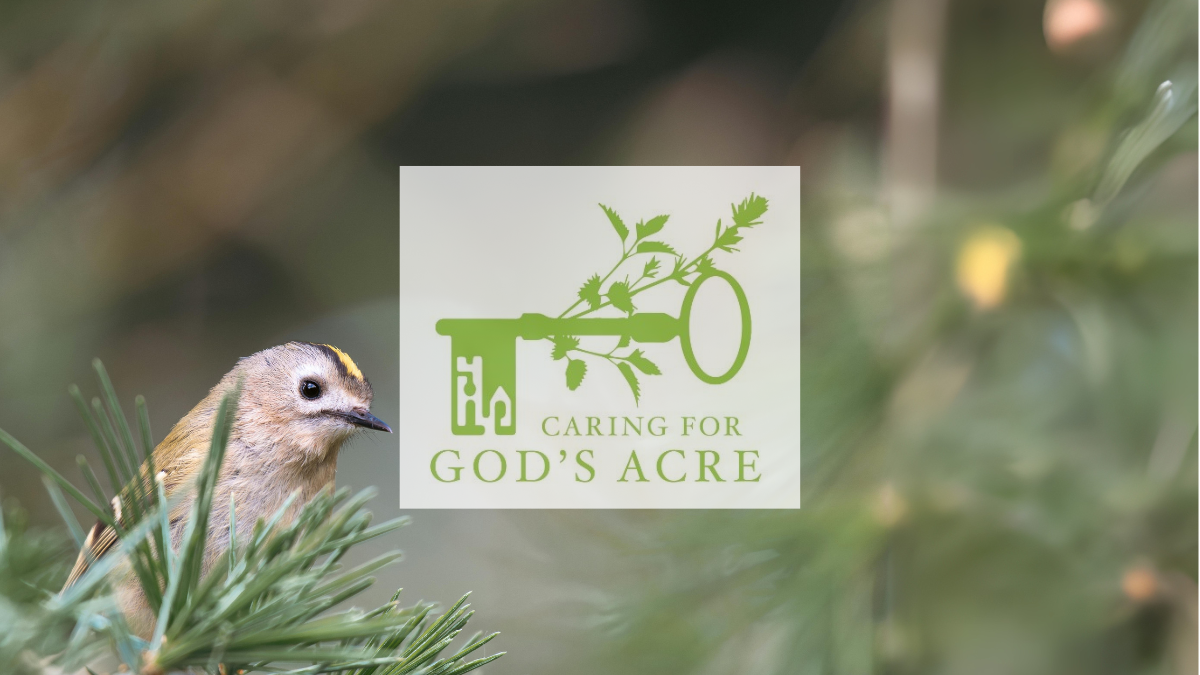
Our two smallest birds
By September many of our summer migrants have left the UK and we are starting to notice shortening days. It can be a good time to reconnect with the birds that don’t migrate and which we can enjoy watching all year round. A churchyard classic is the tiny goldcrest. Goldcrests can be found in the canopies of evergreen trees, particularly yews and cypresses. Its rare to find a churchyard or cemetery without any yews or other evergreens and its also rare to find one without any Goldcrests too!
It can take patience to spot one, they are tiny, about 9cm from beak to tail tip, and well camouflaged apart from their namesake – a striking black and yellow stripe on their heads, their gold crest which they can raise giving them a punk style hairdo! Their Latin name is Regulus regulus, which can be translated as little prince, perhaps due to this golden crown. If you are not able to see a Goldcrest you may hear one, they have a repetitive call, sounding like zee, zee, often on the edge of one’s hearing due to the high pitch.
Our Goldcrests do not migrate to warmer climes or join flocks of other small birds moving through the landscape searching for food as many other small birds do in winter. They stay put in their trees with needles, possibly living their whole lives in a few trees within one churchyard. They are always on the move, busy gleaning small insects and other invertebrates, using a thin beak to pick them out from between tree needles of bark cracks. Although they do not migrate you may however see an increase in Goldcrest numbers in the winter, mainly along the east coast of the UK, as they are joined by Goldcrests from Scandinavia, particularly in hard winters, when large numbers will cross the North Sea. This is quite a flying feat as goldcrests weigh about 5g.
There is another similar species that you may also spot, the Firecrest. These can be thought of as Goldcrests on fire, brighter colours, fiery orange-gold crown and the black head stripe accentuate by a white one below it. Firecrests are increasing in the UK, the first record of breeding birds was in Hampshire in 1962, they are now moving north and are breeding in the Midlands and Wales, with a few pairs in the north of England. There are now over 2,000 breeding pairs. It seems likely that they are responding to changes in climate.
Look out for both Goldcrests and Firecrests in your local churchyard, chapel yard or cemetery and as always please record what you see and hear, ideally using the iNaturalist app. It may be easier to record their song rather than photograph this restless little bird, hidden within the dark canopy of needles.
All the best,
Harriet Carty
Diocesan Churchyard Environmental Advisor
www.caringforgodsacre.org.uk - individuals and groups in the diocese receive 20% members discount on all CfGA materials. Use the discount code diomem22
